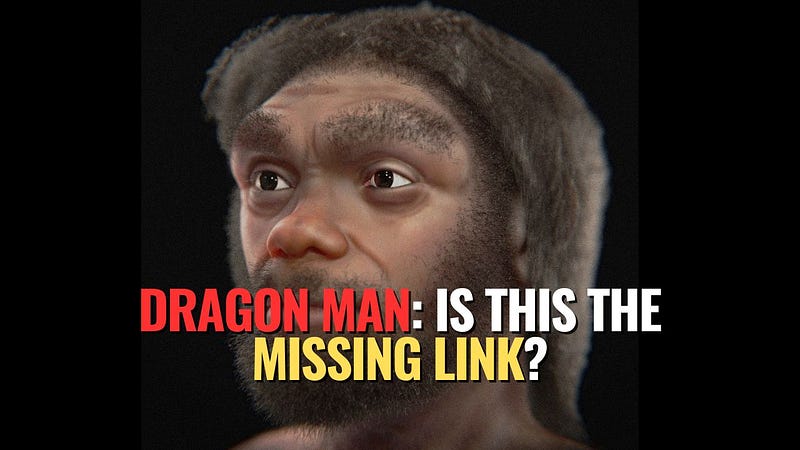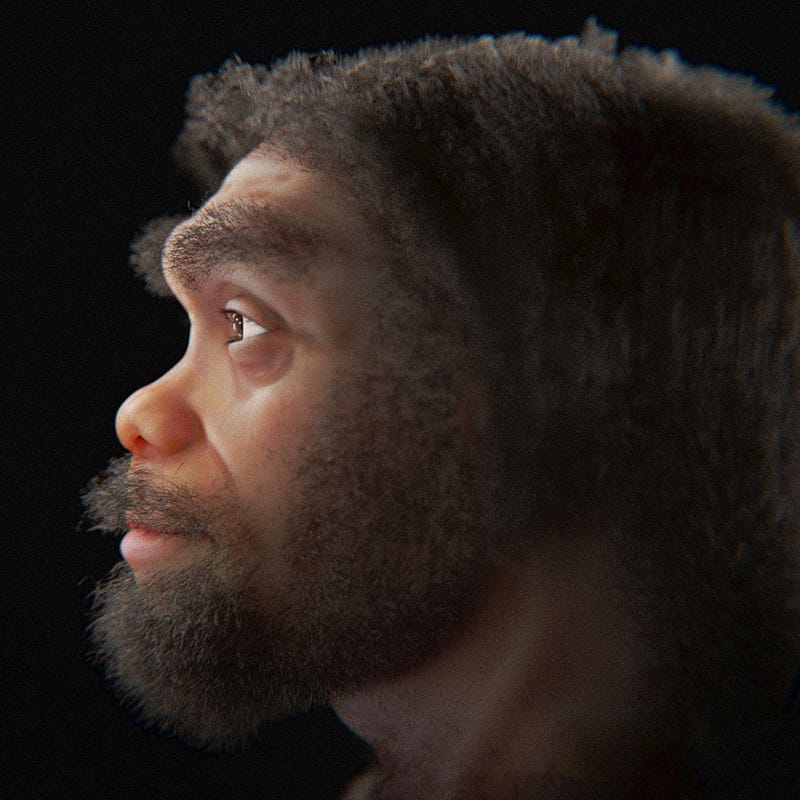The Fascinating Quest for the Missing Link in Human Evolution
Written on
Chapter 1: The Search for Dragon Man
Scientists have been on a quest to uncover the remains of Dragon Man for several years now. Current insights into this extinct Homo species remain limited, making it challenging to firmly establish its position within the evolutionary tree of modern humans.

Homo longi, an extinct species from the genus Homo, inhabited Asia during the Middle Pleistocene era. This species, referred to as Dragon Man, was identified through an almost intact skull, dated to around 148,000 years ago. The skull was discovered more than 90 years ago in Heilongjiang Province, China, serendipitously by workers constructing a bridge over the Songhua River.
The Mysterious Species: Homo longi
The enigmatic Dragon Man continues to captivate researchers. Recently, interest has surged following an article published on the “bioRxiv” platform. However, it is important to note that this article has not undergone peer review yet. The authors suggest that a skull found in 2022 in Hubei Province, China, could belong to Homo longi. Notably, two other puzzling human skulls were previously unearthed in the same region, and their origins and classifications also remain unresolved. Collectively, these three discoveries have been provisionally named “Yunxian Man.”
The classification of this extinct species poses a challenge for scientists. Researchers are still determining where Dragon Man fits in the Homo family tree. One prevailing hypothesis suggests that Homo longi could be related to the Denisovans, although there is insufficient evidence to support this claim.
Did Archaeologists Discover The Missing Link Between Neanderthals and Homo Sapiens?
This video delves into the possibility that recent discoveries could provide the missing link between Neanderthals and modern humans, shedding light on our evolutionary path.
Are These the Remains of Dragon Man?
Recent scientific investigations indicate a potential connection between Dragon Man and the skulls found in Hubei. Researchers arrived at this conclusion by reconstructing the most well-preserved skull and meticulously analyzing its morphology in comparison to other Homo species. The complexity of the skull's features, which exhibit traits from various ancestral lines, complicates the analysis, but the study's authors favor the idea that it is a representative of Homo longi.
The scientists explain, “The analysis of the skull suggests it is an early representative of the Asian Dragon Man lineage, likely associated with the Denisovans, and is a sister group to the Homo sapiens lineage. Both lineages have deep evolutionary roots extending beyond the Middle Pleistocene.”
Interestingly, Yunxian Man predates both Dragon Man and Homo sapiens, with estimates suggesting the skulls could be around 940,000 years old. This raises the intriguing possibility that Yunxian Man might represent a common ancestor of both our species and Dragon Man. However, these remain speculative at this stage.

What Did Dragon Man Look Like?
The name Homo longi is derived from the Long Jiang, or Dragon River, in Heilongjiang Province, China, rather than from its physical characteristics. Nevertheless, artist Cícero Moraes provided a glimpse into the potential appearance of Dragon Man through facial reconstructions.
Moraes, known for his previous reconstructions of Egyptian pharaohs and the so-called “hobbits,” estimated that the head circumference of Homo longi could have been approximately 65.1 centimeters, the largest among all known hominids. The H. longi skull is characterized by its low and elongated shape, with a brain volume of 1420 cm³, which is comparable to modern humans and Neanderthals.
The skull features prominent brow ridges, broad eye sockets, and a pronounced mouth, while Dragon Man’s flat facial structure may allow him to blend in if he were to appear in today’s society, albeit his relatively large nose would likely be a distinguishing feature.
The Enigmatic Druids: Sacred Sacrifices and Exclusive Privileges
One of the druids’ roles involved overseeing sacrifices to deities, with numerous pieces of evidence suggesting that these...
Attention all readers!
As content creators on Medium.com, we receive limited compensation for our efforts. If you find my articles valuable, please consider supporting me on my “Buy Me a Coffee” page. Your small contributions can greatly enhance my ability to produce quality content. Thank you for your generosity!

The Missing Link That Wasn't - YouTube
This video explores the topic of the missing link in human evolution and discusses whether the recent discoveries truly fill this gap or simply add to the complexity of our ancestry.